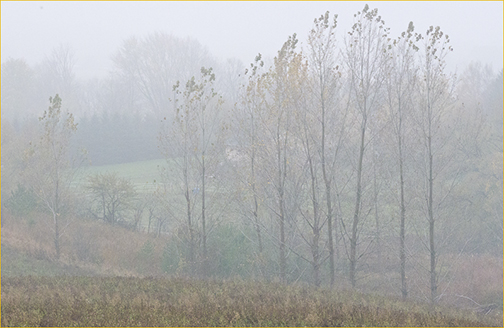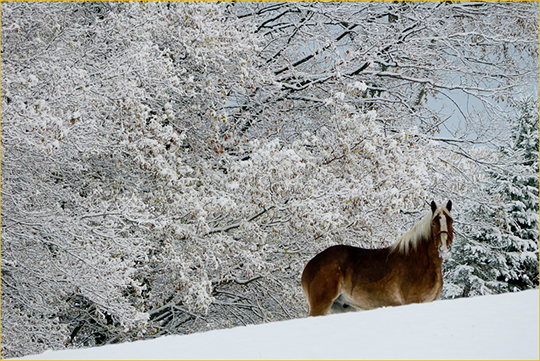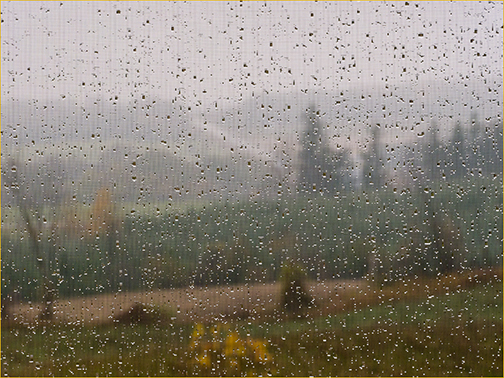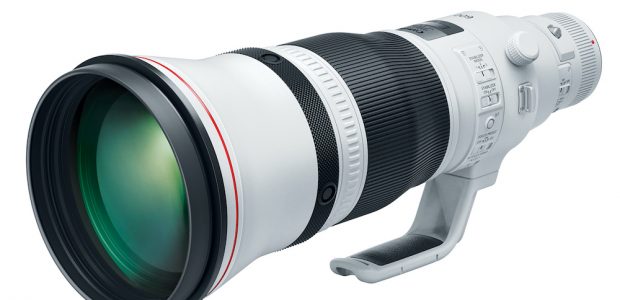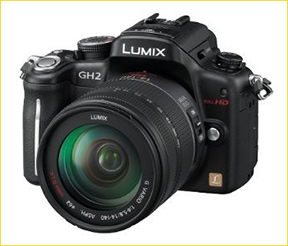
Please note that this First Look report is based on a pre-production camera
and lenses provided for evaluation by Panasonic. While features are the same as
those of final production cameras (December ’10 availability), image quality may change in the
weeks ahead and therefore I am not providing any resolution tests or high ISO comparison images.
At Photokina in 2006 I had dinner with a senior executive in the photographic industry. We were talking about the historical market battle between Nikon and Canon. At one point he paused and said, “You know – the future doesn’t belong to either of those two. The future of the photographic industry belongs to Sony and Panasonic. They get it . As for as I can tell, neither Canon nor Nikon do. They’re simply putting higher resolution and cleaner sensors in the same old boring cameras. That’s not just what the future of this industry is about. Wait – you’ll see“.
Whether you agree with my pundit friend or not the past four years have so far not proven him wrong. Panasonic with Micro Four Thirds and its G series cameras, and Sony with their NEX cameras (both now with semi-pro and pro level video models as well) are grabbing significant market share from the traditional market leaders who are (so far) sticking with 35mm DSLRs.
Both companies are major players in the professional / broadcast video industry, and the stills-video convergence of the past couple of years has not escaped their notice. Finally, keep in mind that with this past decade’s transition to digital, photographic equipment is now inherently part of the consumer electronics industry. Sony and Panasonic are two of the biggest in that arena, not to mention that they both own their own semiconductor design and fab facilities. In other words, like Canon, and unlike some other traditional photo industry players, they are completely vertically integrated. That’s a big deal when it comes to an ability to innovate quickly.
The Next Generation
In the two years since the original G1 of 2008 there have been six G series Panasonic cameras, the G1, GH1, GF1, G10, G2, and now GH2. The GH series are Pany’s top-of-the-line, with full HD video and their best built-in electronic viewfinder. Here are links to my earlier review of theGH1andGF1, as well as theGH1 video hack, which I’ll be referring to later on in this report.
I’ll assume that you are already familiar with the Panasonic G series, and in particular the GH1, and also the evolution ofFour ThirdsintoMicro Four Thirdsand the competition, especially Sony’sNEXseries. Here then is a look at the recently announced and soon to be released GH2.

First Snow. Clearview, Ontario October, 2010
Panasonic GH2 with 100-300 G lens @ ISO 500
What’s Changed?
Sensor
The GH2 is similar to the GH1, just more so. The sensor resolution has been upped from 12 MP to 16MP, bringing the GH2 on par with mainstream APS-C sized sensors, only excepting the Canon 7D at 18MP. In fact the sensor on the GH2 is 18MP overall, but is reduced to 16MP when cropped to the various formats that it allows – 4:3, 3:2, 16:9 and 1:1.
LCD
The camera inherits the high resolution LCD of its predecessor, but adds the touch screen capability of the G2. This allows one to touch a spot on the screen to focus on, and also to actually touch the screen to take a shot. Like an iPhone the screen allows one to swipe ones finger from side to side to change images when reviewing. Nice!
EVF
The electronic viewfinder (EVF) is still the best in the industry, and an open challenge to other manufacturers. It is slightly larger than the one on the GH1, which means that when aspect ratio is changed there is less need for image cropping in the EVF.

Farm at Dusk. Clearview, Ontario. October, 2010
Panasonic GH2 with 100-300 G lens @ ISO 160
Refresh and Speed
The new sensor in the GH2 has more than just higher resolution, it offers significantly faster image processing. This means noticeable advantages when shooting both stills and video. For example, it allows the LCD and EVF refresh rates to be doubled, which means a much clearer on-screen image with less streaking. There are advantages, as we’ll soon see, to the faster sensor read-out when it comes to both autofocus and video.
ISO
It’s no secret that a few years ago Panasonic lagged behind others in its high ISO noise performance. (Sony did at the time too, for that matter). Canon cracked the clean high ISO challenge first, and then Nikon bested them and everyone else. Recent Sony sensors offer very clean high ISO image quality and now Panasonic’s do as well.
Whereas the GH1 went to ISO 3200, and 1600 bordered on unacceptable for other than casual use, the GH2 offers speeds up to 12,800 and 1600 is eminently usable. Even ISO 3200 is usable with just a bit of NR in post processing. This represents a good two stop increase in usable ISO sensitivity with comparable noise characteristics. Indeed, with the sensor offering an effective “one stop” increase in size (12mp to 16MP) users of the GH2 can expect a really significant improvement in image quality over the GH1 at like (large) print sizes (not so much on small ones, of course).
Country Mist. Clearview, Ontario. October, 2010
Panasonic GH2 with 100-300 G lens @ ISO 3200
Autofocus
Readers will likely know that like all non-reflex cameras Panasonic’s G series uses contrast detection autofocus, not phase detection the way that DSLRs do. The GH1 surprised us two years ago by providing remarkably fast contrast detection AF. Surprising good, but not great.
With the GH2 Panasonic has pulled a rabbit out of its hat. The new sensor’s faster read-out allows the autofocus of the GH2 to apparently equal that of mid-level DSLRs. While I haven’t done any lab tests (I’m sure that the technical review sites will do so as soon as production cameras become available), my sense is that Panasonic has licked the AF speed issue on non-DSLRs.

Very Low Contrast Example
But, regardless of its speed, the GH2 still is a contrast detection system, and there are situations where it simply doesn’t have enough contrast to focus. Above is one such example, where the fog was so thick and therefore the contrast so low that the GH2 could not find anything to focus on. In a week of shooting, in rain, fog, snow and indoors in low light, I never encountered another situation where the camera could not find something to focus on, so this is simply illustrative of the system’s limits not its normal AF capabilities, which are quite excellent.
Parenthetically, Sony took the approach with its new “Translucent Mirror” cameras, the A55 and A33, of using a pellicle mirror to siphon off some 1/3rd of the light coming through the lens to feed a phase detection AF system. This works very well, but has proven to be somewhat controversial in some quarters. Panasonic’s solution (however it works) seems equally effective. A focusing speed shoot-out between these two systems will be informative when done.
Video
The GH1 was Panasonic’s answer to Canon’s initial video challenge of the 5D MKII, and subsequent video capable DSLRs models from them and others. It was an immediate success in some quarters because it offered fully manual control when shooting video, and a video friendly lens in the form of the kit 14-140mm/F4.0-5.8 lens. It easily took a wide range of desirable cine and still lenses, including PL mount as well as M Leica, Voigtlander, Zeiss and others, because of its short back focus distance.
Alas, video image quality was not up to the promise of the hardware. Here’s what I wrote in my June, 2010 write-up onthe independent video hackthat was produced to try and fix the GH1’s video IQ….
In 720P/60 mode image quality is excellent, though in 1080/P24, which is what most people want for indy video production, its really great – so long as neither the camera nor subject move . If there’s motion in the frame you get “mud”, which is the official ISO term for crappy footage.
As first explained in my 2009 review the reason for this is that Panasonic crippled the GH1 with a poor AVCHD codec that embeds its 24P footage in a 60i envelope (forcing users to use specialized software to unwrap it before transcoding), and a codec which does not properly utilize “B” frames, which assist in motion prediction. The bottom line is that Panasonic lost the race even before they hit the starting gate by not equipping the camera with a 1080P/24 codec that serious users would find acceptable. What a shame.
But, as the saying goes – that was then and this is now. The new GH2 shoots native 1920X1080P / 24 at the maximum AVCHD frame rate of 24 Mbps. Hurray! The camera also shoots 1920X1080i / 60 at 17 Mbps and 1280 X 720P / 60. In PAL regions the camera records 50i and 50P at the previously mentioned resolutions, and in all cases the sensor is recording in Progressive mode. Since the only Progressive mode that the AVCHD standard formally recognizes is 24P, 1920X1080 is shot progressively but recorded as interlaced.
This is not as bad as it seems, because the camera is always actually capturing Progressive frames and therefore no vertical resolution is being lost. Any decent monitor or HD TV will reintegrate the interlace signal to produce a full resolution Progressive image. The only bad news (if you live in a PAL country) is that the camera does not shoot 25P.
I did not have an opportunity to do much more than some basic video tests during the week that I have the pre-production GH2 for testing, but I can report that at first glance, every aspect of image quality seems very fine, with none of the mud that marred the GH1. 24P mode looked particularly filmic and appealing.
If the above sounds a bit curt and understated, that’s because it is. In some brief video tests conducted by Chris Sanderson and me, we saw what looked to be excellent video quality – so much so that Chris that day placed his order for a GH2 and set of lenses. Since Chris is a director/cameraman with some 30 years of professional production experience, and currently uses a pair of Sony EX-1s for our commercial video productions, that’s saying something.
Chris and I will be taking our GH2 systems (yes, I ordered one as well) to Mexico in mid-December, shortly after the cameras are scheduled to become available. We expect to be shooting both stills and video in San Miguel during the Christmas and New Years holidays, and will follow up here with test reports as well as footage to share in January.

Last Call. Clearview, Ontario. October, 2010
Panasonic GH2 with 100-300 G lens @ ISO 1600
Manual
The GH2 comes with an excellent 200 page printed manual. Panasonic is to be applauded for this, as increasingly companies are shipping their cameras with a smallGetting Startedpamphlet in seven languages, with the full manual on CD. I don’t know about you, but I keep my manual in my camera bag because I usually need to refer to it when I’m in the field, not when sitting at my computer. Other manufacturers please take note.We want printed manuals!
Miscellaneous
The GH1 came with an AC adaptor for fixed location shooting. The GH2 does not, and if you need one it will need to be purchased as an accessory. The good news (at least in North America) is that the battery charger has fold-out prongs, rather than the bulky cord that the GH1’s charger featured.
Unfortunately, the GH2’s battery is a new one and the camera can not take the batteries from the GH1 or any other Panasonic G model. Why do companies keep changing batteries sizes and form factors with every new model? Just to create another profit center? It’s hard not to think so.
Of course the GH2 supports raw mode, and the good news is that as of Oct 25, 2010, prior to the camera’s first shipments, Adobe supports it in both Lightroom 3.3RC and Camera Raw 6.3. Panasonic is to be commended for obviously working closely with Adobe by providing pre-production cameras for testing. They obviously recognize that it’s simply good business to work with theeight hundred pound gorillaof the industry – something that regrettably a number of large camera makes still don’t, to their and their customer’s detriment.
Husks. Clearview, Ontario. October, 2010
Panasonic GH2 with 100-300 G lens @ ISO 1250
Ergonomics
There are a subset of folks in the online photography community that to my mind are over-obsessed with the issue of image quality; things like absolute resolution and high ISO noise. These are of course important attributes, and a camera must first and foremost deliver on not just their promise, but also comparably with similarly priced and featured devices from other makers.
But, for anyone that’s been seriously involved with photography for more than a couple of years, it finally dawns that now, more than a decade into the digital revolution, the differences that we saw – first between film and digital – and now between similarly specs brands, is oftende minimus. This means that to make sense of our buying decisions we need to also include haptics and ergonomics. A camera that produces great image quality is desirable, but one that fights you every step of the way with poorly conceived controls and awkward user interface eventually just becomes a pain in the ass. If one is a Sunday photographer, then a lot of design faults can either be overlooked or can be lived with. But for the more serious photographer, and especially working pros and others who use their cameras daily to earn some or all of their living, bad designs simply can’t be tolerated.
Which brings us to the Panasonic GH2 specifically, and the G series in particular. Unlike some of its competitors, Panasonic “gets” user interface from a photographer’s perspective. Though the camera is small, its very comfortable in hand for someone with “normal” sized hands. If you have large hands, you may find the grip area somewhat tight for your fingers and so should test for yourself before purchase.
In addition to the LCD and EVF both being state-of-the-art in terms of resolution and overall clarity, switching between them can be set to eye-detect as well as manual switching. The addition of a touch screen interface (optionally activated) means that the point of focus can be pointed to, and also the shutter can be released simply by touching the screen on the point of interest.
Ridge Line. Clearview, Ontario. October, 2010
Panasonic GH2 with 100-300 G lens @ ISO 800
Just about every important control – focus mode (center, multi-point, moveable point, face detection) release mode (single, continuous, manual), shooting speed (single shot, high speed, bracketing, self timer) has its own lever setting controls. No need to dive into menus for these primary functions.
There are also three soft keys, Fn1 on the top panel, and Fn2 and Fn3 on the rear, that can be programmed to activate just about any camera function. There is a Quick menu button that provides easy access to regularly accessed items.
And finally, there are three Custom Setting modes C1,C2, and C3, which can memorize every combination of camera settings for instant recall. Oh yes, almost forgot, there is the My Menu mode which automatically remembers your last five menu selections and lists them by frequency of use.
The wheel that used to be on the front edge of the grip has now been moved to the rear. This is a much better location, because it means that your index finger can remain in the shutter release, ready for a shot while your thumb controls exposure shift and exposure compensation with the wheel. One switches between the two by simply pressing in on the wheel. Neat.
At the risk of repeating myself, this is aphotographer’scamera. By this I mean that it was clearly designed by people whousecameras and understand their role as tools, not just by marketing and engineering types looking to win the spec and shelf appeal wars, even if it means that the camera’s design is a dog’s breakfast of poorly designed menus and awkwardly place controls. (Yes – I’m talking about the Sony NEX series, which are direct competitors to the Panasonic G series, and which seem to have had their user interface designed by a 8th grade drop-out whacked out on Quaaludes).
LUMIX G VARIO 100-300mm / F4.0-5.6 / MEGA O.I.S.
When theFour Thirdsformat was introduced back in 2002, and theOlympus E-1started shipping in 2003 I called the Four Thirds format an “evolutionary dead end”. I still stand by that statement. The format’s smaller sensor size promised smaller cameras and lighter and smaller lenses. But it didn’t end up that way. The need for a mirror box and prism kept 4/3 cameras larger than their proponents and users might have wished.
Then a few years agoMicro Four Thirdscame on the scene and the game changed. We have the same sized sensor as before, but by getting rid of the mirror box and prism, and thus allowing for a much shorter back focus distance, cameras with significantly smaller and lighter lenses were possible. The Panasonic 45-200mm f/4-5.6 lens has been in constant use on my GH1 for a couple of years now. It’s equivalent in magnification to a 90-400mm in full frame 35mm terms (though of course with broader DOF at any given aperture and equivalent focal length) and is almost small enough to fit in a jacket pocket. Image quality is good, though not great, but its small size, low weight and versatility more than make up for it. (The Sony 100-400mm on my A900 is a superior package, but after a few hours with one of these over ones shoulder your neck muscles will tell you about it. The GF1 with 45-200mm gives the same magnification range and can be carried in one hand all day without effort).
Now we have a new Panasonic long lens, a 100-300mm with the same minimum aperture range as the 45-200, and with a 35mm equivalent focal range of 200-600mm. A 600mm f/5.6 with built-in stabilization that fits in the palm of one hand? Now you’re talking!
Screened. Clearview, Ontario. October, 2010
Panasonic GH2 with 100-300 G lens @ ISO 1600
How good is it? Very good, though again I have not done any lab tests, simply a few hundred real-world frames during a one week period. I’m sure we’ll have technical reports soon enough once the lens starts shipping in November.
What I see is a lens with very good image quality. There’s the usual amount of vignetting at wide apertures and image quality in the corners is a bit soft wide open. Stopped down one or two stops resolution becomes excellent, and vignetting effectively disappears.
When mounted on the GH2 focusing is very fast, and silent, and the built-in Mega OIS means that the lens can be hand held at shutter speeds at least 3 stops slower than without. I didn’t notice any CA to speak of.
If I were heading to Africa on a photo safari any time soon (which regrettably I’m not) this is hands-down the camera / lens combination that I’d take along.
LUMIX G 14mm / F2.5 ASPH
Everyone loves pancakes, and Panasonic’s new so-called pancake lens, the 14mm f/2.5 is a tasty one indeed. It’s not much thicker than a front and a rear body cap joined together, and when attached to the already diminutive GH2, still manages to look tiny. This lens acquitted itself exceptionally well during my casual testing, producing sharp contrasty images at all apertures with very speedy AF. There’s a bit of vignetting at wider apertures, but nothing problematic.
At the equivalent of 28mm and with a maximum aperture fast enough for many indoor applications (especially when combined with the GH2’s clean ISO 1600 setting), I expect that this lens will become a favourite of many photographers.

Early Winter Snow. Clearview Ontario. October, 2010
Panasonic GH2 with 14mm f/2.5 @ ISO 160
Preliminary Conclusions
It’s hard for me not to sound a bit overzealous about the GH2 and these two new lenses. I was predisposed toward the GH1, and now with the GH2 Panasonic has mostly fixed those few deficiencies that the GH1 had – video quality, a no longer competitive 12MP sensor, and poor high ISO image quality. The GH2 checks all of the boxes with feature, specification, and image quality upgrades that make it a worthwhile product upgrade for previous Panasonic G series owners, and a very viable alternative to similarly priced APS-C sized sensor competitors.
As for its most direct competitor, theSony NEX 5, I would judge them comparable when it comes to overall stills image quality. But the GH2 leaves the NEX 5 in the dust when it comes to ease of use, especially for the more serious photographer who doesn’t want to have to fight the camera to find needed functions buried in deep menus, and who value traditional mechanical controls rather than multi-modal buttons. Yes, the NEX 5 is smaller than the GH2 even though it has a larger sensor, but not by that much. But the GH2 has a high quality EVF, and is about as small as a camera can be and still have a full range of mechanical controls so beloved of serious photographers.
When it comes to video the GH2 has it all over the NEX 5. Full manual video control, 1080 /24P, 24 Mbps AVCHD vs a highly feature constrained video offering on the NEX, and no EVF. No contest.
The Sony VG10 offers a NEX lens owner a robust video capability but the GH2 is actually a more full featured video camera than the dedicated VG10. And when it comes to stepping up, the forthcoming Panasonic AF100 video camera looks to be a killer product, with the GH2 likely to become a preferred B cam for its owners.
After a week of testing I’ve decided to buy a GH2 and both of these new lenses to add to my Micro Four Thirds arsenal. These have been my go-to cameras for the past few years for light weight travel and hiking, and now the GH2 looks to significantly enhance the outfit. As for video, I’ve already mention that Chris has ordered one as well, and with his 30 years of film and video production experience I trust his eye when it comes to evaluating video quality as much as anyone.
In summary, the GH2 looks to be a winner. I hope to have more to say in December after taking delivery and having a chance to use one in the field in a variety of situations and applications.
October, 2010
You May Also Enjoy...
The Telephoto Conundrum
FacebookTweet A year ago, I would not have predicted that the telephoto market would look like this today. I would especially not have predicted who’s
